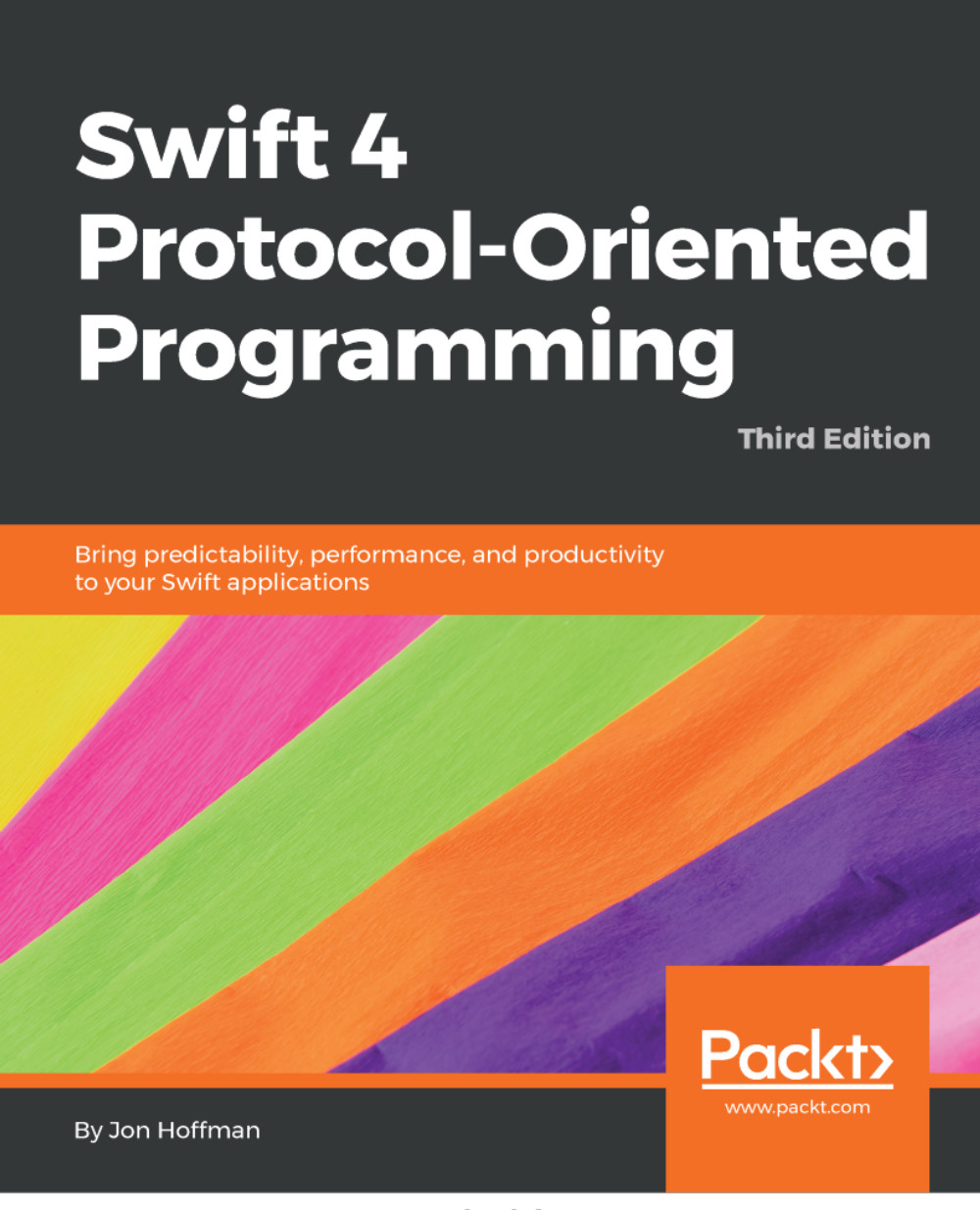In most traditional, object-oriented programming languages, we create classes (which are reference types) as blueprints for our objects. In Swift, unlike other object-oriented languages, structures have much of the same functionality as classes; however, they are value types. Apple has said that we should prefer value types, such as structures, to reference types, but what are the actual advantages? Swift actually has a number of type choices that we can use, and in this chapter we will look at all of these types to see their advantages and disadvantages. Knowing how and when to use each type is important in order to properly implement protocol-oriented programming in our projects.
In this chapter, you will learn the following:
- What a class is and how to use it
- What a structure is and how to use it
- What an enumeration is and how to use it
- What a tuple is and...



